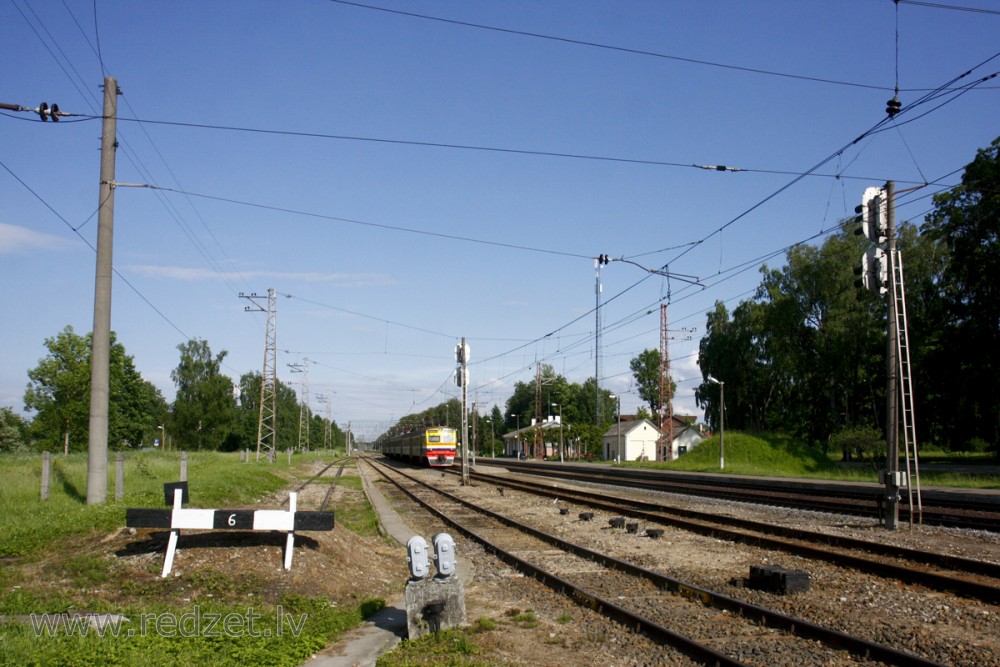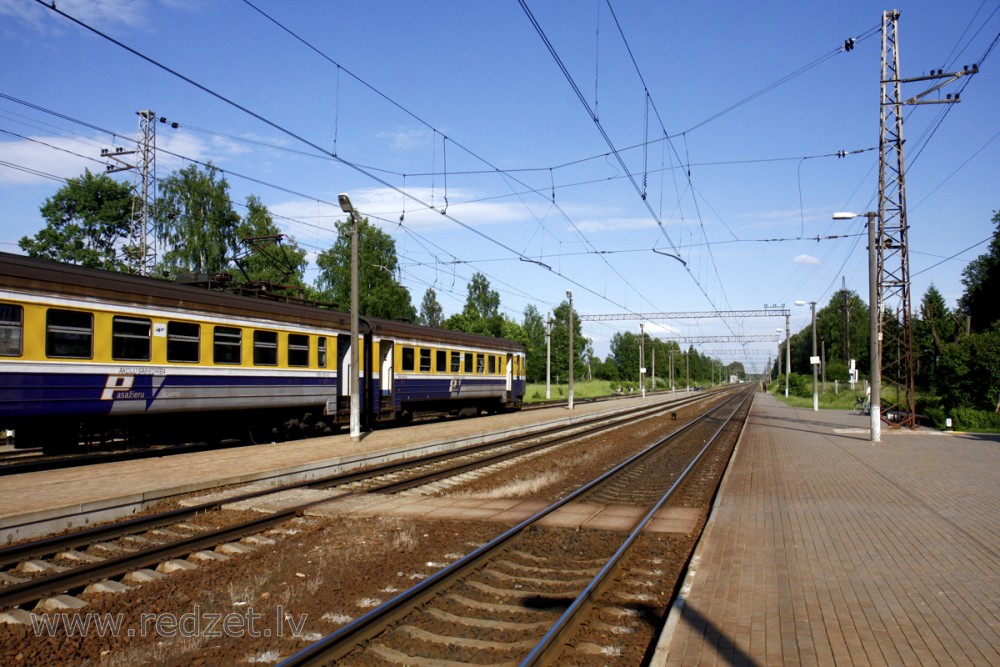Lielvārde
Lielvārde, population 6328, is a town in Vidzeme, Latvia, the administrative centre of Lielvārde municipality on the right bank of the Daugava river, 52 km southeast of Riga.
History
The area was a contact zone between the Finnic Livonians and the Balts, and many prehistoric artifacts have been uncovered there. A Baltic hill-fort named Lennewarden being taken in fief by Albert of Buxhoeveden in 1201 is mentioned in the Chronicle of Henry of Livonia. This site is called Dievukalns (Hill of the Gods) in Latvian. A stone castle was constructed by the Riga diocese in 1229; its ruins are still accessible today.
A parochial school was established when the area was part of Swedish Livonia, but ca. 70% of the population perished in the Great Plague of 1710. The opening of the Riga–Daugavpils Railway in 1861 led to the expansion of the town around the railway station Ringmundhofa later named Rembate. The town was entirely destroyed in World War I but was swiftly rebuilt after Latvia achieved independence.
After the occupation of Latvia and its incorporation into the Soviet Union as the Latvian SSR, Edgars Kauliņš (1903–1979), the local Communist Party secretary, was able to save all of the farmers in the district from deportation during the period of forced collectivization, declaring that there were no kulaks in the area and he would rather be deported himself. In 1948 Kauliņš became the founding chairman of the kolkhoz Lāčplēsis ("The Bear Slayer"), now part of Lielvārde. The kolkhoz became famous for its beer, still brewed in Lielvārde by AS Lāčplēša alus, part of the Scandinavian Royal Unibrew brewing group since 2005. Lielvārde air base was built by the Soviets in 1970; the largest in the Baltic States, it was taken over by the Latvian Air Force in 1994.
Cultural traditions
Lielvārde is renowned as the area that inspired the prominent Latvian poets Auseklis and Andrejs Pumpurs, author of the epic Lāčplēsis (The Bear Slayer, 1888), and for the Lielvārdes josta, a traditional woven belt with 22 ancient symbols. Portions of the belt's design are featured on Latvian banknotes, and its symbolism has inspired many artists and folklore enthusiasts, especially those associated with the pagan revival, dievturība.
en.wikipedia.org
The name of Lielvārde (Leenewarde at the time) first appeared in 1201 in the Indriķis Chronicles. There is, however, archeological evidence at Dievukalns that Baltic tribes inhabited the area as early as three thousand years ago.
During the Latvian renaissance, Andrejs Pumpurs and Auseklis drew inspiration for their poetry in Lielvārde. During this period, the residents of Lielvārde collected 6606 folk songs (dainas), a noteworthy contribution to the “Latvju dainas” collection of Krišjānis Barons.
In the 1970s a military airfield was opened near the town of Lielvārde.
In 1992 Lielvārde was awarded city status. As a result of territorial reforms, in 2004 the city of Lielvārde and the surrounding rural area became Lielvārde district, which now includes the rural municipalities of Lēdmane and Jumprava.
Area: the city of Lielvārde covers 983 ha, the rural municipality of Lielvārde – 5025 ha. The area of the district is 22578 ha.
Population: the population of the city of Lielvārde is 6089, the rural municipality of Lielvārde – 925, the district has a population of 10050.
Lēdmane parish
The first written record of the rural municipality of Lēdmane appeared in 1641. Lēdmane is located at the Ulbroka-Koknese highway 30 km from Ogre, 15 km from Lielvārde and 70 km from Rīga. The Ogre River flows through the rural municipality, the entire river bed area has been designated as the Ogre Valley Nature Park. The Lobe River is located in the southeast section.
Area: 7826 ha, Population: 1222
Jumprava parish
Written records dating back to the middle of the 13th century already mention the name of Jumprava (Jungferhoff – Jumpravmuiža). In the Old German dialect ‘jungfer’ means ‘maiden’, and this was the origin of the name of ‘Jungferhoff’, which the Latvians later changed to Jumprava. In 1996 Jumprava was awarded the honor of the best-kept rural municipality in Vidzeme.
Area: 8744, Population: 1814
(Area and population data from the Central Statistics Administration, 2015)
lielvarde.lv
Continue reading

